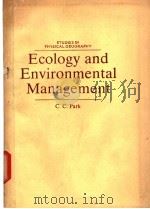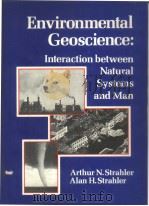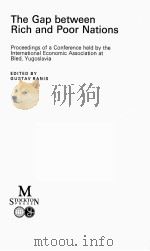《NATIONAL ENVIRONMENTAL ACCOUNTING BRIDGING THE GAP BETWEEN ECOLOGY AND ECONOMY》
| 作者 | JOY E. HECHT 编者 |
|---|---|
| 出版 | 未查询到或未知 |
| 参考页数 | 255 |
| 出版时间 | 没有确切时间的资料 目录预览 |
| ISBN号 | 1891853945 — 求助条款 |
| PDF编号 | 811867338(仅供预览,未存储实际文件) |
| 求助格式 | 扫描PDF(若分多册发行,每次仅能受理1册) |
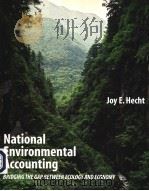
1.National Environmental Accounts1
Origin of the National Income Accounts2
Why Change the SNA?3
Sustainable Income and the Environmental Accounts5
Brief History of Applied Work on Environmental Accounting9
2.Concepts of Conventional National Income Accounting16
The Economy and the Accounts16
From Concepts to Structured Accounts: What the Accounts Track25
3.Structure of the Conventional Income Accounts33
The Integrated Economic Accounts33
Accounting Aggregates41
Supply and Use Tables42
Input-Output Tables43
Input-Output Analysis47
4.Overview of the Revised SEEA53
Physical Flow Accounts53
Hybrid Accounts61
Environmental Protection and Resource Management Accounts70
Natural Resource Asset Accounts71
Environmentally Adjusted Macroeconomic Indicators74
5.Pollution Accounting: The Physical Side76
How Much Do We Pollute?76
Who Does the Polluting?77
Calculating the Residuals78
What Exactly Is a Residual?80
International Flows82
Recycling and Waste Management84
Pollution Indicators86
6.Pollution Accounting: What Are We Spending Now?90
Cost of Preventing Pollution versus Harm Resulting from Pollution91
Classification of Environmental Protection Activities92
Products Used for Environmental Protection94
The Environment Industry94
Environmental Taxes and Subsidies96
Supply and Use Tables for Environmental Protection Expenditures97
National Expenditure on Environmental Protection100
7.Pollution Accounting: Policy Questions102
What Would It Costa Reduce Pollution Furtheff102
What Costs Does Pollution Impose?108
Valuing the Costs Imposed by Pollution110
Economic Approach to Pollution Damages113
Valuation, Cost-Benefit Analysis, and Accounting114
Environmental Policy in the Accounts115
8.Resource Accounting120
Definition of Resource Assets in the Accounting Frameworks121
General Framework for Asset Accounts121
Physical versus Monetary Accounts124
Link between Asset Accounts and Current Accounts125
Methods for Valuing Assets and Depletion125
Flows of Resource Products131
9.Forest Accounts136
Classifying Forest Goods and Services in Theory136
Challenges in Designing Forest Classification Systems137
Accounting Structure for Forest Assets139
Accounting Structure for Flows of Forest Products139
Definition of Forest141
Classifying Forest Goods and Services in Practice142
Managed versus Natural Forests142
Valuing Timber Assets144
Examples145
10.Subsoil Asset Accounts153
Mineral Sustainability: A Contradiction in Terms?154
Running Out of Resources154
General Framework for Subsoil Assets in the Accounts156
Classifying SubsoilAssets157
Valuing Stocks and Rents158
Examples161
11.Fisheries, Land, and Water Accounts169
Fisheries169
Land175
Water183
Macroeconomic Indicators in the SEEA196
Adjustments for Depletion and Degradation: The Problems196
How the Problems Are Handled in the Accounts199
Adjustments for Nonmarketed Products and Their Loss as a Result of Degradation202
Defensive Expenditures204
Model-Based Approaches to Measuring Income206
3. Macroeconomic Measures outside the SEEA209
Genuine Savings209
Approaches Based Solely in Economics211
MeasuringWelfare214
Measuring Aggregate Environmental lmpact of the Economy221
Notes226
References229
Abbreuiations and Acronyms234
Glossary236
Index244
About the Author255
《NATIONAL ENVIRONMENTAL ACCOUNTING BRIDGING THE GAP BETWEEN ECOLOGY AND ECONOMY》由于是年代较久的资料都绝版了,几乎不可能购买到实物。如果大家为了学习确实需要,可向博主求助其电子版PDF文件。对合法合规的求助,我会当即受理并将下载地址发送给你。
高度相关资料
-

- THE POLITICAL ECONOMY OF ENVIRONMENTAL PROTECTION
- 1979 JAI PRESS
-

- BRIDGING THE GAP COLLEGE READING FOURTH EDITION
- 1993年 HARPERCOLLINS COLLEGE PUBLISHERS
-

- ROMANTIC ECOLOGY WORDSWORTH AND THE ENVIRONMENTAL TRADITION
- 1991 ROUTLEDGE TAYLOR & FRANCIS GROUP
-
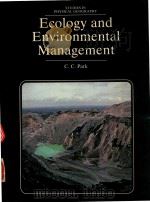
- ECOLOGY AND ENVIRONMENTAL MANAGEMENT
- 1980 DAWSON WESTVIEW PRESS
-

- BLACKS AND WHITES:NARROWING THE GAP?
- 1984 HARVARD UNIVERSITY PRESS
-

- BRIDGING THE GAP BETWEEN LEARNING ENGLISH IN THE CLASSROOM AND USING ENGLISH IN LECTURE HALLS STUDEN
- 1979 Michigan State University Press
-

- BRIDGING THE GAP BETWEEN LEARNING ENGLISH IN THE CLASSROOM AND USING ENGLISH IN LECTURE HALLS STUDEN
- 1979 Michigan State University Press
-

- ENGINEERING RESEARCH AND DESIGN-BRIDGING THE GAP I MECH E CONFERENCE PUBLICATIONS 1981-7
- 1981 WAVENEY PRINT SERVICES LTD
-

- Trade and the Environment:Bridging the Gap
- 1998 Cameron May
-
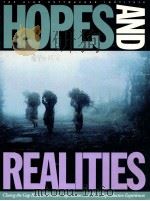
- HOPES AND REALITIES CLOSING THE GAP BETWEEN WOMEN'S ASPIRDATIONS AND THEIR REPRODUCTIVE EXPERIE
- 1995 THE ALAN GUTTMACHER INSTITUE
-

- HOPES AND REALITIES COLSING THE GAP BETWEEN WOMEN'S ASPIRATIONS AND THEIR REPRODUCTIVE EXPERIEN
- UNITED NATIONS POPULATION FUND
提示:百度云已更名为百度网盘(百度盘),天翼云盘、微盘下载地址……暂未提供。➥ PDF文字可复制化或转WORD

